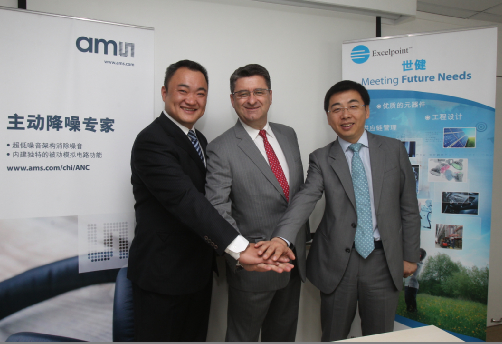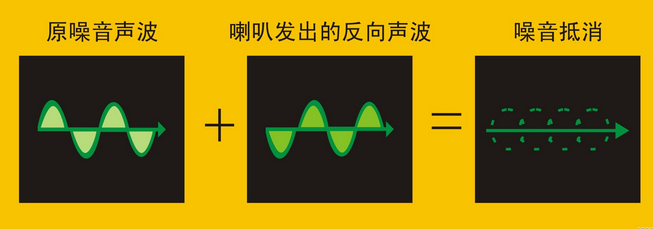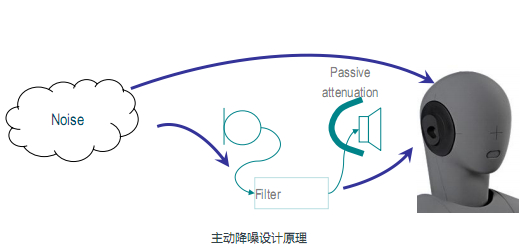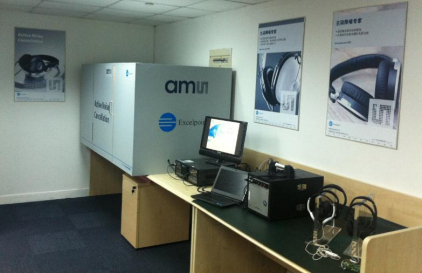At present, environmental pollution does not only refer to water pollution and air pollution. Noise pollution is also a concern. In the practice of human noise pollution prevention, two technical genres are gradually formed, one is passive noise reduction (also known as passive noise reduction). Physical noise reduction), one is active noise reduction (also known as active noise reduction). The technical feature of passive noise reduction is to use various characteristics of the material, to isolate the noise source, to reduce noise by damping, damping, etc. The passive noise reduction technology has a significant effect on high frequency noise, but for a large number of ubiquitous low frequencies. The roaring effect is not good. In the face of low-frequency noise, active noise reduction technology has its own unique advantages, and it is gradually beginning to increase its volume. Especially with the increasing demands of consumers for mobile communication and multimedia applications, the competition of electronic products is becoming increasingly fierce. Experience has gradually become an important factor in product competitiveness, which has also contributed to the rapid growth of active noise reduction technology applications.
Although active noise reduction technology has matured in some countries, the technology is still in the development stage in China, and the rapid development of China's smart phone market has brought more personalized consumer demand, and major manufacturers are exploring new ones. The market growth point, seeking product differentiation and competitive advantage, the high-performance sound quality products at this time are particularly easy to win the market affirmation, the original designers are actively promoting the application of active noise reduction technology in portable products. Active noise reduction technology is widely used in wired, wireless, mono and stereo accessories, and according to Rob Damjanovic, sales director of Austin Microelectronics Asia Pacific, China's active noise reduction application market will exceed 20% next year. The growth rate is developing rapidly, and the next five years are all rapid development periods. Austriamicroelectronics is very optimistic about this market prospect.

From left to right: Chen Jian, Director of Product Marketing, Shijian, Rob Damjanovic, Sales Director, Austrian Microelectronics Asia Pacific, and Laurence Zhang, General Manager, Austrian Microelectronics China 
Active noise reduction technology diagram
Laurence Zhang, general manager of Austrian Microelectronics China, said that active noise reduction technology uses sound as a wave characteristic to eliminate noise by emitting reverse sound waves to hedge the original sound waves and make them weaker or even disappear. The active noise reduction technology is characterized by a very small size, basically does not occupy an effective space, and the noise reduction efficiency is very high, especially for a large number of ubiquitous low-frequency roaring sounds in environmental noise is particularly good! Austrian Microelectronics' active noise reduction technology is known for its ultra-low power consumption and high performance. This is also the two key points of active noise reduction technology.
Ultra low power and high performance are key
Noise reduction technology has been around for many years, but better algorithms, processes and methods are still being researched. But with the popularity of mobile applications, power consumption has become the focus. With optimized integration and a simulation process tailored for active noise reduction, the Austrian Microelectronics Active Noise Reduction solution saves power and significantly increases playback time. Data shows that evaluations based on standard DSP codecs show that Austrian Microelectronics solutions can reduce power consumption by 2-3 times.
Laurence Zhang also stressed that although many people like the digital noise reduction method, AMS always thinks that the effect of the analog noise reduction method is the best, because the analog noise reduction method does not have the process of front-end sampling, compression, encoding, etc., there is no sound quality in the middle. The loss can guarantee the best sound quality. AMS has consistently adopted analog noise reduction, filter-based phase adjustment and signal amplification in the analog domain to meet stringent audiophile requirements and minimize power consumption.
And Austrian Microelectronics' integrated solutions include headphone amplifiers, charge pumps, Line in gain control, mic preamps, filter op amps, voltage monitors, interfaces and controls, and active noise reduction chips in 4*4 mm. Or a 5*5mm QFN package can help reduce physical space and system size, and integrate all the features necessary for high-performance active noise reduction without the need for external components such as resistors, inductors, and oscillators. This is another big advantage of the Austrian microelectronics solution.
AMS and Shijian's strong alliance
In order to promote the Chinese market, Austrian Microelectronics and Shijian Company support the continuous development of active noise reduction technology applications with first-class technology and solid local resources. A strong partnership with channel partners is an important reflection of Austrian Microelectronics' China market strategy. Engineers at the Austrian Microelectronics Headquarters regularly conduct training courses for distributor partners to help improve the design of the world's technical staff in the field of active noise reduction. ability. Shijian's technicians have access to the latest active noise reduction design tools and techniques, and provide professional support for the development of active noise reduction products. In order to shorten the time-to-market of end-customer products, Shijian also specially set up an audio test lab in the Shenzhen office to test various types of active noise-reducing equipment. Now, Shijian has formed a complete active noise reduction technology research, development and testing platform, with feedforward, feedback and feedforward plus feedback design, suitable for in-ear, in-ear and over-the-ear type Headphones can help local audio engineers efficiently.


Audio Test Lab established by Shijian
Chen Jian, director of product marketing at Shijian, said that Shijian is very familiar with the Chinese market and is able to provide Chinese customers with timely and tailor-made solutions. After absorbing the active noise reduction technology and reference design of austriamicrosystems, Shijian Audio Center has added corresponding innovative added value, enabling Shijian to quickly provide design suggestions to customers and help them shorten time to market and reduce costs. . In the fast-growing market of active noise reduction, the joint and mutually supportive partnership between the two parties will enable both companies to achieve greater benefits.
Wired Industrial Barcode Scanner
Wired Industrial Barcode Scanner,Zebra Industrial Barcode Scanner,Industrial Fixed Barcode Scanner,Zebra Industrial Scanner
Guangzhou Winson Information Technology Co., Ltd. , https://www.winsonintelligent.com
